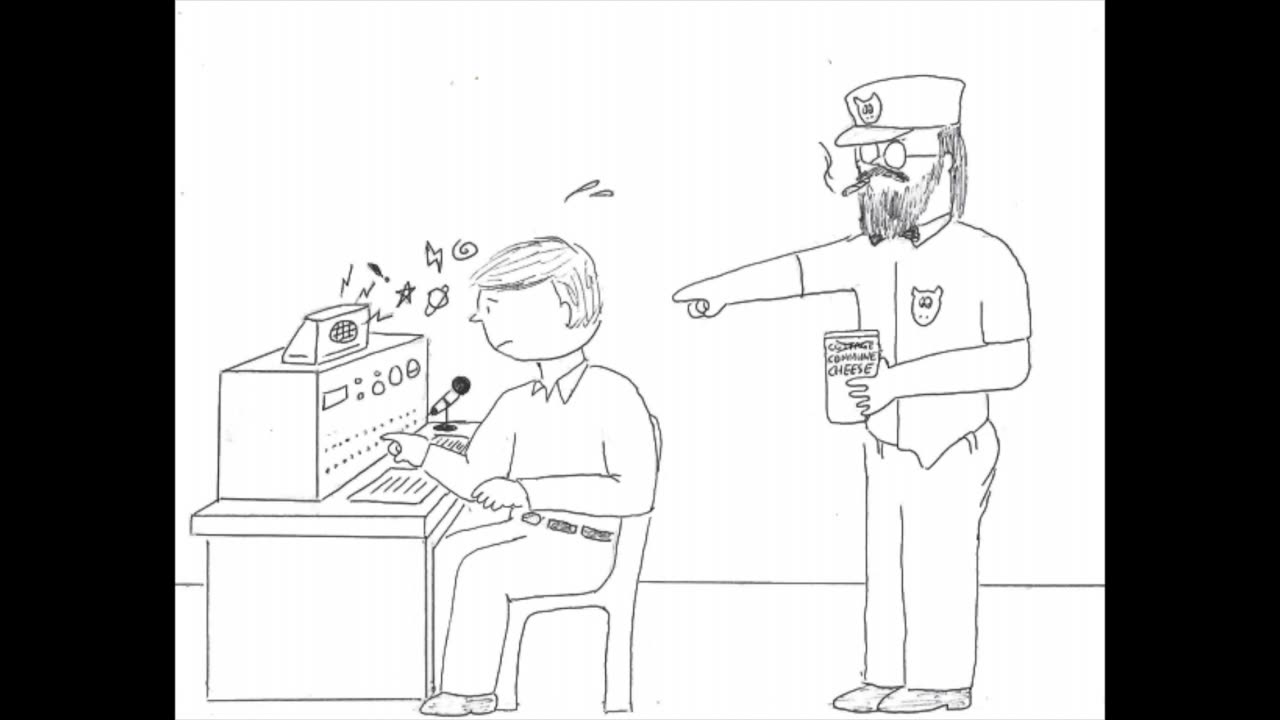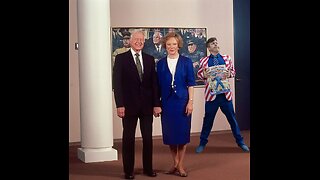Premium Only Content

Obedience to Questioning Authority
In the 1960s at Yale University, Dr. Stanley Milgram conducted a series of experiments pertaining to an individual’s obedience to authority. This sketch is in fact a parody of the most famous experiment in that series. The skit turns the whole experiment on its ear and shows how far a “freshman reporter” working for an underground university newspaper is willing to go to please his “editor,” an editor who, despite the fact that he claims to hold within him the power of love and prides himself on questioning authority, is every bit as dangerous as the authority he condemns. Strange as he may sound, Steven Milkman in fact encapsulates in a single individual that fascinating generation known as “the 60’s generation” who on one facet, promotes peace and love, and, on another facet, advocates violence and anarchy.
In the classic Milgram experiment, two subjects were randomly chosen to be either a learner or a teacher. The experimenter and the teacher were in one room, and the learner was in a separate room, out of view. The only mode of communication between the two rooms was via a microphone located on the teacher’s desk and a display panel in the teacher’s room indicating the learner’s answer. The lesson was a paired associated learning task. The teacher read word pairs to the learner, then in the testing sequence, read the first word of the pair along with four terms (for example, the teacher read pairs like: “blue box nice day wild duck” then, in the testing sequence, he would read “blue: sky, ink, box, lamp”) The learner was to indicate which of the four terms the teacher read had been paired with the first word and answer with the corresponding number in the order they were presented (in the above example, the correct answer would have been “3”). If the learner was correct, the teacher moved on to the next pair. If the learner was incorrect, he received a shock from the teacher. The teacher started with 15 volts, and with each incorrect answer, proceeded in 15 volt increments (30, 45, 60, etc.) up to the maximum of 450 volts.
In fact, the “learner” was an accomplice of the experiment (i.e., a fake subject) and no shocks were administered. The purpose of the experiment was to see how far the real subject (as a teacher) would go in the experiment before discontinuing. The idea was that as the intensity of the shocks increased, the learner, who had mentioned prior to the beginning of the experiment that he had heart trouble, began to shout through the wall, complaining more and more about the discomfort as the experiment wore on (these “shouts” were actually prepared, pre-recorded “complaints” to ensure consistency across subjects). At 150 volts, the learner claimed that his heart was starting to bother him and that he demanded to be released. The experimenter then used a series of prepared statements (called “prods”) to encourage the teacher to go on until the teacher absolutely refused to continue. Dr. Milgram found it rather concerning that nearly 50 percent of all subjects followed the experimenter’s orders all the way up to 450 volts despite the learner’s protests.
CoBaD suspects this may not be as alarming as one may think. CoBaD viewed Dr. Milgram’s 1962 documentary “Obedience” and none of the teachers appeared to be sadistic or relentless in nature. In fact, all teachers at one point or another showed reluctance to continue. One teacher, who, despite going all the way to 450 volts, openly showed compassion by repeatedly saying “Answer, please” and “Are you alright in there?”
That same teacher also asked a question to the experimenter that was particularly fascinating from a 21st century perspective. At 180 volts, the teacher hesitated to go on, and then asked the experimenter, “…Who’s gonna take the responsibility if anything happens to that gentlemen,” and the experimenter replied, “I’m responsible for anything that happens here” (which, by the way, was NOT a prepared prod; the experimenter would only volunteer this information when asked). The teacher asked that question to the examiner again at 390 volts. In both instances, when the experimenter assumed all (legal) responsibility, it appeared that it became a little easier for the teacher to continue. In this day and age when people are afraid of saying or doing things for fear of being ostracized, losing their jobs, getting sued or going to jail, CoBaD wonders if the same results in this experiment would be achieved today if teachers could be assured upfront that they would not be liable for any adverse consequences that ensued.
As we all know, the accomplice was in fact quite alright. Once the teacher went into the other room, the “learner,” James McDonough, unhooked himself and set up a tape recorder (to play his cries of protest), and hooked up an answer generating device. After that, he really didn’t have anything to do until the conclusion of the experiment when he met with the teacher to ensure him that he was alright. It’s hard not to imagine Mr. McDonough in that room sitting back and relaxing, changing into bunny slippers, putting his hair in curlers, filing his nails and scarfing on bon bons to pass the time.
For those interested in learning about this and Dr. Milgram’s other experiments in the series (e.g., proximity of experimenter to teacher, proximity of learner to teacher, number of teachers, etc.), CoBaD recommends reading Dr. Milgram’s book “Obedience to Authority” (1974).
The picture in the top left hand corner of the first sketch is a spoof of the Marine scene from the painting “The Apotheosis of Washington” (1865) painted by Constantino Brumidi, and photographed by the Architect of the Capitol. “The Apotheosis of Washington” is painted on the dome in the rotunda of the United States Capitol Building in Washington, D.C. Frankly, we think “The Apotheosis of Freud” is a much better painting, don’t you?
Finally, contrary to what our esteemed announcer Mr. Jimothy Pajama-Bottoms claimed, the Dr. Milkman’s linguistic wardrobe was actually furnished by The Hippie Glossary: https://www.hipplanet.com/books/atoz/glossary.htm
-
 50:00
50:00
Graham Allen
3 hours agoGoodbye 2024…. HELLO 2025!!
30.3K10 -
 LIVE
LIVE
LFA TV
14 hours agoH1B FIASCO! | LIVE FROM AMERICA 12.30.24 11am EST
4,143 watching -
 2:05:37
2:05:37
Matt Kohrs
14 hours agoStocks Puke, Breaking News & BIG Updates || The MK Show
30.9K2 -
 51:57
51:57
Dad Dojo Podcast
2 hours ago $0.35 earnedEP15: The Bronny James Debate 2
3.55K -
 10:53
10:53
Rethinking the Dollar
18 hours agoTariffs Won’t Save the US Dollar
3.01K20 -
 30:40
30:40
BonginoReport
4 hours agoHow Based Gen Z Men Are Shaping the New Right: Evita + John Doyle (Ep.111) - 12/30/2024
40.2K38 -
 LIVE
LIVE
Wendy Bell Radio
6 hours agoThe Worst President Of All
13,079 watching -
 1:50:03
1:50:03
Jeff Ahern
2 hours ago $0.83 earnedMonday Madness with Jeff Ahern (6am Pacific)
12.1K -
 2:54:24
2:54:24
Fed Reacts
15 hours agoFormer Fed Explains Lil Durk's Second Murder For Hire
112K31 -
 44:13
44:13
barstoolsports
21 hours agoThe Shred Line with Coach Gruden, Dave Portnoy and Steven Cheah | Week 17
184K17